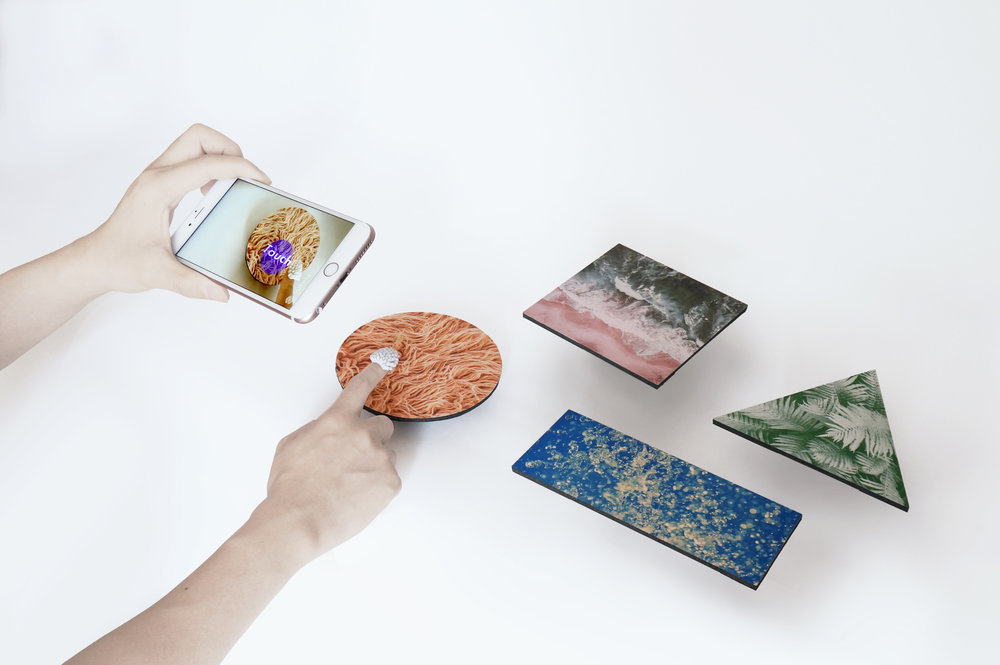“U can’t touch this!” – Does sense of touch is needed in online shopping experience?
In the last decade, consumer purchases behaviour has changed. The explosive growth of e-commerce generates the tendency to design immersive shopping environment. The most advanced interactive technology focuses on the visual improvement of cybershopping, such as creating a 3D virtual dressing room and implementing virtual store. However, the lack of touch has always been a concern when it comes to buying products over the internet.
Holistic approach.
Human senses are the focal point of sensory marketing 1000 dollar loan today. The five senses which are sight, smell, hearing, taste and touch have a huge impact on the consumer’s individual experience during shopping and consumption. Sensory marketing assumed that brand experience for goods and services must be perceived holistically. Marketing activities focused on human senses, are aimed at potential customers to evoke specific sensory experience. They help to acquaint the recipient with the brand from the emotional perspective. Thus, the brand image is the result of a person’s sensory experiences with the brand. (Hultén et al. 1). Every customer has individual experience, which is called the experience logic. This logic is subjective and personalised. It presents the way in which the customer with the assistance of five senses, receives and interprets sensory experience. Sensory experience follows from the senses’ reaction to all kinds of elements, or sensation source used in marketing. These components are known as stimuli. It is assumed that a person is the sum of their own experiences of various activities and events. Therefore, it becomes more individual and personal when a consumer is affected by stimuli during the purchase or consumption. Recipient’s sensory experience is strictly linked with one’s personality, lifestyle, and social context. These elements can magnify the brand image. Therefore, brand should represent the specific sensory experience and all its components strengthen the value for the customer, such as name, logo, symbol, price, product, advertising, etc. (Hultén et al. 13). Thus, the interaction of the five senses has a huge impact on customer’s individual purchasing and consumption processes– it allows to achieve the highest stage of sensory brand recognition (Hultén et al. 31).
How touching works?
Touch receptors located in the skin are responsible for receiving stimuli such as heat, roughness, smoothness, pain, cold, etc. Through the neural connections, evoked in this way, impulses reach the brain and are there transformed into tactile consciousness (Hultén et al. 134). The recipient by touching gains an opportunity to acquaint oneself with properties of objects, their material and texture, shape and softness, temperature and weight. The fact is that the reactions to touch, in addition to the physical dimension, also have a psychological nature – they induce feelings and emotions. It should be noted that in a variety of audiences sensitivity to the sense of touch can be developed differently, which significantly affects their reception to the message of the brand. Some people’s need to touch the items is especially strong because they are more open to emotions induced in this way (Peck and Childers 37).
High (tech) touch.
The arrival of the World Wide Web has made it possible for people to access a variety of simulations in virtual space. The possibilities to design experiences which transcend sensory limits become immense (Sparke 135). In collaboration with the MIT’s Touch Laboratory, designers understand the value of touch by testing the boundaries of touch aesthetics. The power of touching something is defined as an internal body feeling that offers a subjective dimension:
“If you are only looking at something, you are not aware of that sensation, but if you pick up an apple, you meet the flesh of the apple with your own flesh, and that feedback literally creates a sense of yourself” (Street and Lewis 183).
A language of tactile sensations implemented at the user level could enable direct input and output from any surface that your hands are in touch with. Jon Wippich explains:
“If haptics can cause us to reconsider the richness of the actual physical world for even a moment, then technology will have helped us to recall what it is to be human” (Street and Lewis 185).
Next-gen haptics.
Haptic technology alludes to any innovation that gives the feeling of touch and movement. It functions together with AR (augmented reality) and VR (virtual reality), simulating physical interaction in another audiovisual dimension. Every company is looking for ways to expand their existing offer through technology, that is why this innovation was quickly embraced by Retail. Alibaba in China has released its Refinity Haptic Technology solution that provides multisensual online shopping experience. According to Dominique Essig:
“The ability to simulate texture and fabric on smartphones and tablets is a breakthrough for online shopping, connecting the physical and digital worlds” (Wunderman Thompson Intelligence).
It is one thing to understand what the customers want now, but another thing to predict the desires and aspirations of tomorrow. As early as 2020, the survey revealed that consumers – especially younger generations are expecting a different kind of cybershopping experience (Rayers). The customer of the future would be more demanding. To win and keep the custom of future generations of shoppers, online retailers need to evolve in order to embody the best shopping both online and offline. High quality visual is undoubtedly one of the first steps towards reaching the virtual world in which customers expect and remain essential to the successful development of online shopping in the future. Nevertheless, there is still a long way to go, considering the undeveloped haptic technology, to provide a user-friendly and functional tangible interface for shopping on the internet (Zhang et al. 6).
Work Cited
- Cash, Debra. “Touching is believing.” Technology Review, Vol. 96, no. 6, 1993, p. 9. Gale Academic OneFile, https://link-gale-com.proxy.uba.uva.nl:2443/apps/doc/A14388771/AONE?u=amst&sid=AONE&xid=863d21cc. Accessed 27 Sept. 2020.
- Delong, Marilyn, et al. “May I Touch It?” Textile, vol. 5, no. 1, 2007, pp. 34–49, Gale Academic OneFile, https://link-gale-com.proxy.uba.uva.nl:2443/apps/doc/A175632630/AONE?u=amst&sid=AONE&xid=7c62efaa. Accessed 27 September 2020.
- Hultén, Bertil, Niklas Broweus, and Marcus van Dijk. Sensory Marketing. Palgrave Macmillan, 2009.
- Lindstrom, Martin. Brand Sense: How to Build Powerful Brands through Touch, Taste, Smell, Sight and Sound. Free Press, 2005.
- Peck, Joann, and Terry L. Childers. “To Have And To Hold: The Influence Of Haptic Information on Product Judgments.” Journal of Marketing, vol.67, no. 2, 2003, pp. 35-48. doi:10.1509/jmkg.67.2.35.18612. Accessed 26 September 2020.
- Petit, Olivia, Carlos Velasco and Charles Spence. “Digital Sensory Marketing: Integrating New Technologies Into Multisensory Online Experience.” Journal of Interactive Marketing, vol. 45, 2019, pp. 42–6, doi:10.1016/j.intmar.2018.07.004. Accessed 26 September 2020.
- Rayers, Sophie. “ Is Online ‘e-tailing’ Missing the Human Touch?” MarketingTech, TechForge, 18 September 2017, https://marketingtechnews.net/news/2017/sep/18/online-e-tailing-missing-human-touch/. Accessed 26 September 2020.
- Shell, A. Michelle and Ryan W. Buell. “How Necessary Is the Human Touch?” Harvard Business Review, vol. 97, no. 4, 2019, p. 28. EBSCOhost, search.ebscohost.com/login.aspx?direct=true&db=buh&AN=137120566&site=ehost-live&scope=site. Accessed 25 September 2020.
- Krishna, Aradhna. “Psychology The Science of Sensory Marketing.” Harvard Business Review, vol. 93, no. 3, 2015, pp. 28-30. EBSCOhost, search.ebscohost.com/login.aspx?direct=true&db=buh&AN=101105356&site=ehost-live&scope=site. Accessed 25 September 2020.
- Sparke, Penny. An Introduction to Design and Culture, 1900 to the Present. Routledge, 2004.
- Street, Rita and Adam Till. Touch, Graphics, The Power of Tactile Design. Rockport, 2001.
- Wunderman Thompson Intelligence. The Future 100. New York, 2020. PDF file.
- Zhang, Xingzi, et al. ”Adding a Sense of Touch to Online Shopping: Does It Really Help?” CGI ’17: Proceedings of the Computer Graphics International Conference, 2017, pp. 1–6, doi:10.1145/3095140.3095163. Accessed 25 September 2020.

